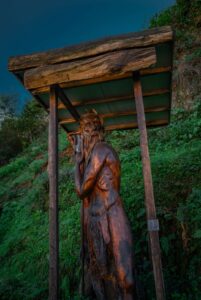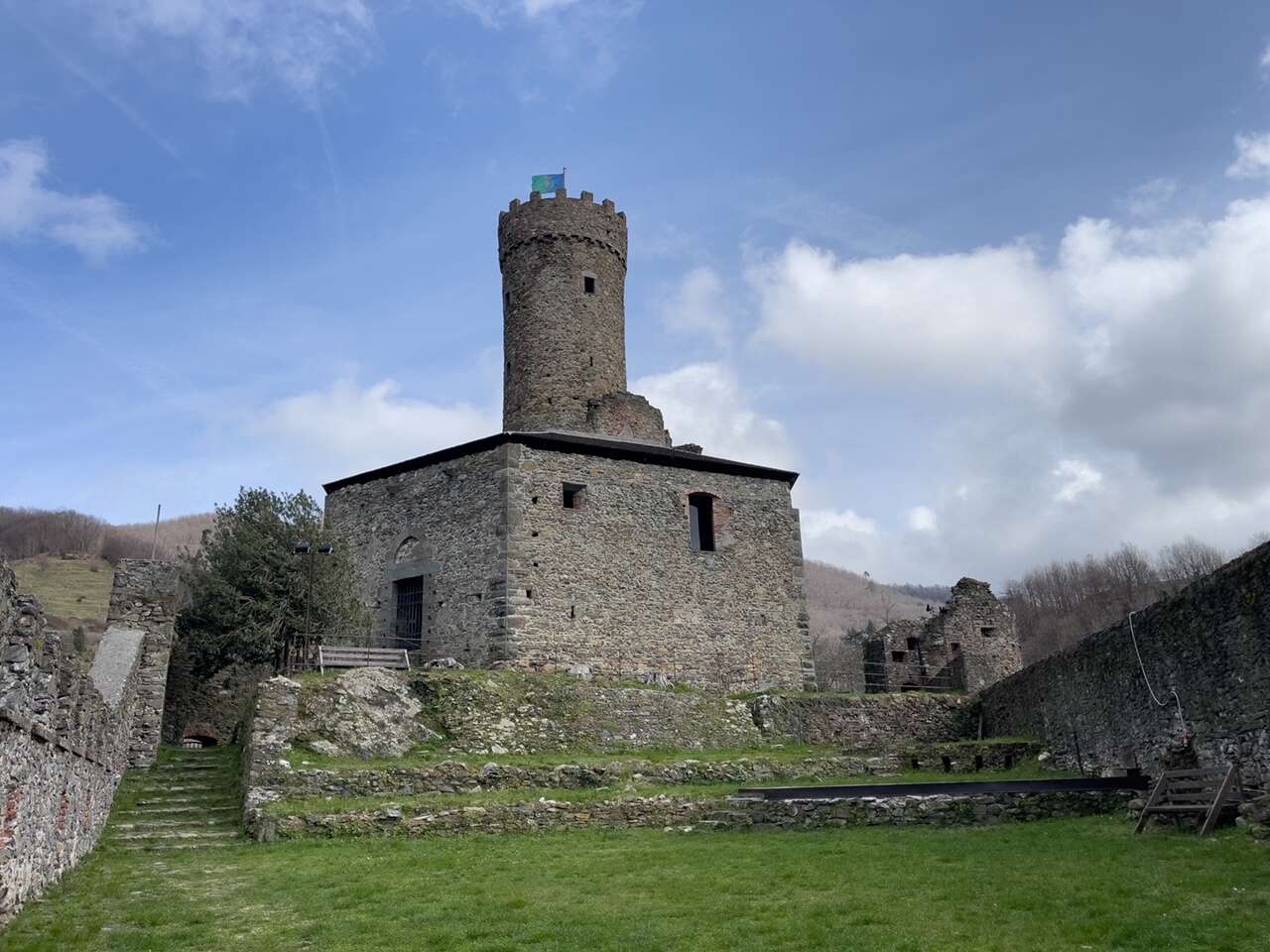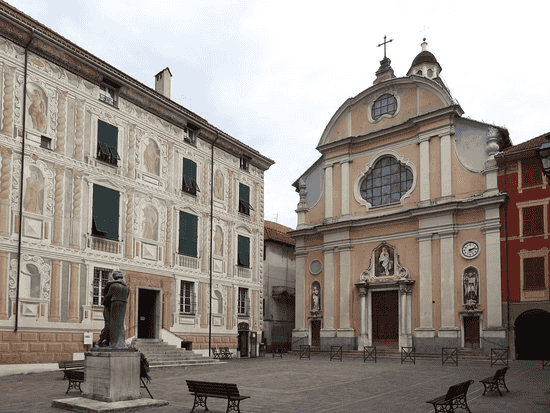Its peculiar name, “Campo,” does not refer to an agricultural issue, but rather would derive from the fact that the town came into being in the 3rd century CE as a strategic military camp to control the Stura Valley. This was the case for several centuries, during which the Romans, Byzantines and Lombards succeeded one another. In the 10th century it became a fief of the Del Vasto family, and in the 13th century it passed to the Republic of Genoa, under which it became a possession of the Spinola family. Later it developed greatly, both in terms of fortifications and monuments. This was mainly because of the enormous wealth derived from the presence in the village of ironworks and forges, which produced mainly nails, destined for the building industry and the shipyards of Genoa.
It was from this tradition that, in the late 19th century, filigree production was derived, which, in a short time, became the main activity of the village. Over the years, Campo Ligure has established itself so well that it has become the Filigree Capital of Italy.
Today, thanks to its monuments as well as its famous goldsmithing technique, it has joined the Club of the Most Beautiful Villages in Italy.






What to see in Campo Ligure
- CASTELLO SPINOLA
- MUSEO DELLA FILIGRANA
- CHIESA DELLA NATIVITÀ DI MARIA VERGINE
- ORATORIO DEI SANTI SEBASTIANO E ROCCO
- ORATORIO DI NOSTRA SIGNORA ASSUNTA
- PONTE MEDIOEVALE DI ADALASIA
Spinola Castle sits atop the hill overlooking the village. The oldest part of the castle is the keep, dating from around the 12th-13th centuries: it appears to have been built in place of an earlier watchtower.
In the 14th century, the building was greatly enlarged by the Spinola family, with surrounding walls and three cylindrical towers. These were later modified in the 15th century to make them more suitable and resistant to the new firearms. Several underground and aerial passages were carved out that allowed escape from the village to the castle in case of siege. From the 19th century, the castle was abandoned and remained in a state of neglect until the 1990s, when it was purchased by the municipality of Campo Ligure. Currently, in the summertime, it hosts musical and theatrical performances.
In 1984, the municipality decided to open the Watermark Museum, with the support of Commendatore Pietro Carlo Bosio, a great lover of this art. After his death, the rich collection of filigree objects from around the world was donated to the museum, which was named after him.
The museum is a major attraction: inside are splendid artifacts divided by geographical area. This allows the visitor to notice the stylistic differences between the different schools: one can admire the refinement in the use of materials such as ivory and tortoiseshell for Chinese filigrees, and the colored enamels of Russian and Nepalese filigrees. Ample space is given to local craft creations and those of Italian schools, such as Genoa, Venice, Florence and Cortina D’Ampezzo.
The building, which overlooks the central square of the Borgo, was built around the middle of the 18th century, where a Renaissance church was already standing. The interior is decorated with 19th-century frescoes by Francesco and Achille Gainotti. There is also a beautiful altarpiece dedicated to the Martyrdom of Saint Lucy, painted by master Bernardo Strozzi in the late 16th century, and another depicting the Deposition, painted in the late 18th century by Vittorio Amedeo Rapous. Of notable workmanship are the two wooden statues preserved here: one, from the 17th century, represents Our Lady of the Rosary; the other depicts the patron saint of Campo Ligure, St. Mary Magdalene, and was carved by Ignazio Bettoni in 1877-78.
The Oratory of Saints Sebastian and Rocco, located just outside the historic center of Campo Ligure, was originally the headquarters of the Compagnia dei Disciplinati, but by 1600 the confraternity moved elsewhere and the building became the village’s civil hospital.The structure of the Oratory is inspired by Austrian Baroque and houses some works of art of undisputed value. These include a 15th-century fresco, already present in the original oratory, by an itinerant Piedmontese painter. We also mention: The Martyrdom of St. Sebastian with St. Roch and St. Michael the Archangel by the flourishing workshop of Casa Piola; the canvas, attributed to local painter Sante Leoncini, depicting St. Irene as she assists St. Sebastian; The Eternal Father and the Angels, a fresco By Andrea Leoncini.
Built at the foot of the castle hill in the 17th century, it is a typical example of Ligurian Baroque. The richly decorated interior houses some wooden sculptures from the Genoese school. Of particular note are the Assumption by 17th-century sculptor Ursino De Mari and the wooden group of the Madonna and St. Gaetano by the school of Maragliano.
The Medieval Bridge of the Stura, built in the 9th century, also named after Adalasia, the legendary first wife of Aleramo, the first Marquis of Monferrato. At the time of its construction, Campo Ligure was in fact under the control of the Aleramic marquises.












































